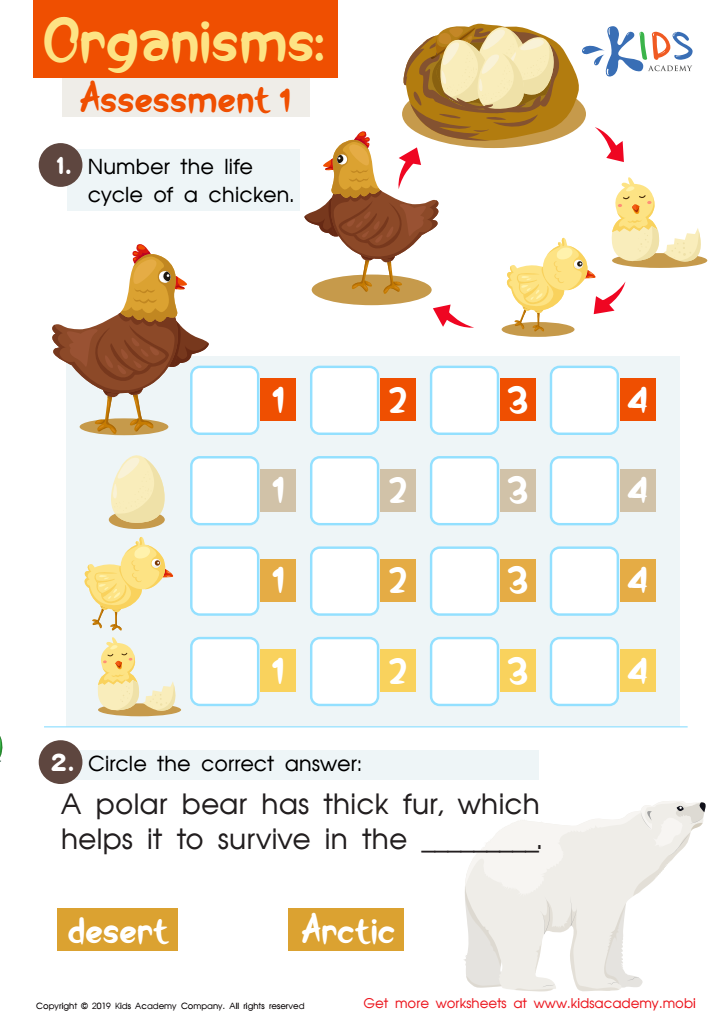Recognizing habitats Worksheets for Kids
1 filtered results
-
From - To


Organisms: Assessment 1 Worksheet
Question/Answer
What are some effective activities to train students’ Recognizing habitats skill when teaching them about Our Planet and Environment?
Effective activities for training students in recognizing habitats include guided nature walks, habitat mapping projects, interactive online simulations, creating dioramas or models of different habitats, and habitat comparison studies using pictures or videos. These activities help students observe, compare, and understand the distinct characteristics and the variety of life within different ecosystems.
What does the Recognizing habitats skill mean when it comes to Grade 3 Our Planet and Environment learning?
The Recognizing habitats skill in Grade 3 Our Planet and Environment learning refers to the ability of students to identify and understand different natural habitats, such as forests, deserts, and oceans. It entails recognizing the characteristics of these environments and the types of plants and animals that live in each, highlighting the diversity and interconnectedness of life on Earth.
How does the mastery of the Recognizing habitats skill affect a student's performance at an early age?
Mastery of the Recognizing habitats skill at an early age positively impacts a student's performance by enhancing their observational skills, scientific understanding, and awareness of biodiversity and conservation issues. It fosters curiosity and respect for the environment, improving cognitive abilities and encouraging active learning through exploration, ultimately leading to a well-rounded educational foundation.
 Assign to the classroom
Assign to the classroom



.jpg)








